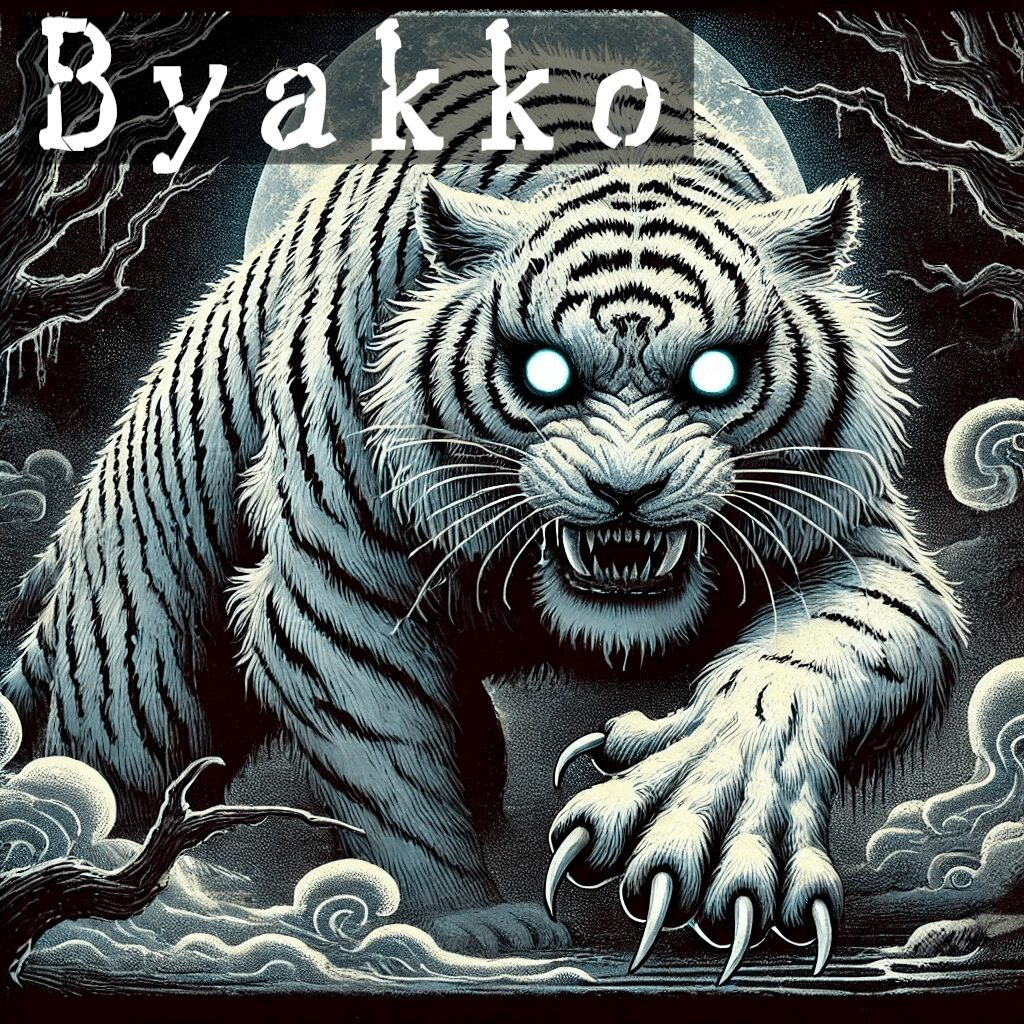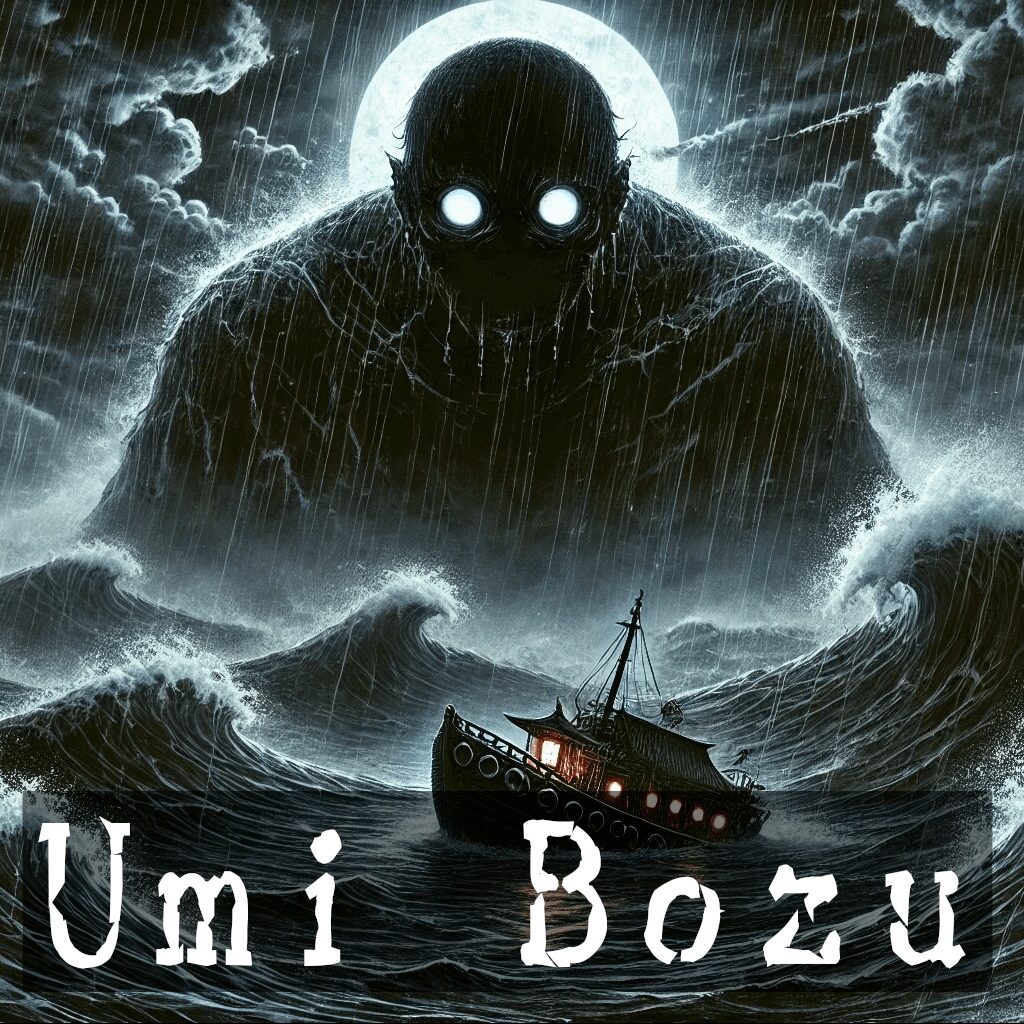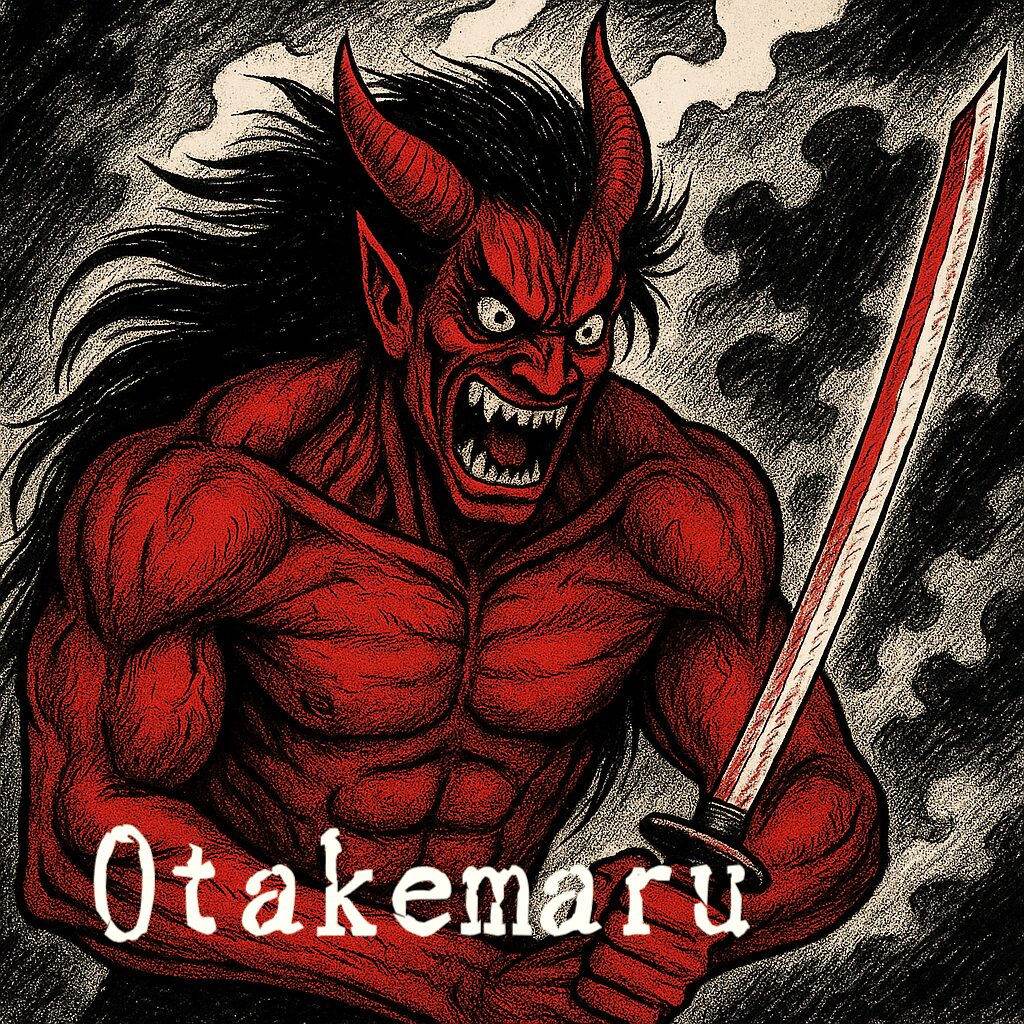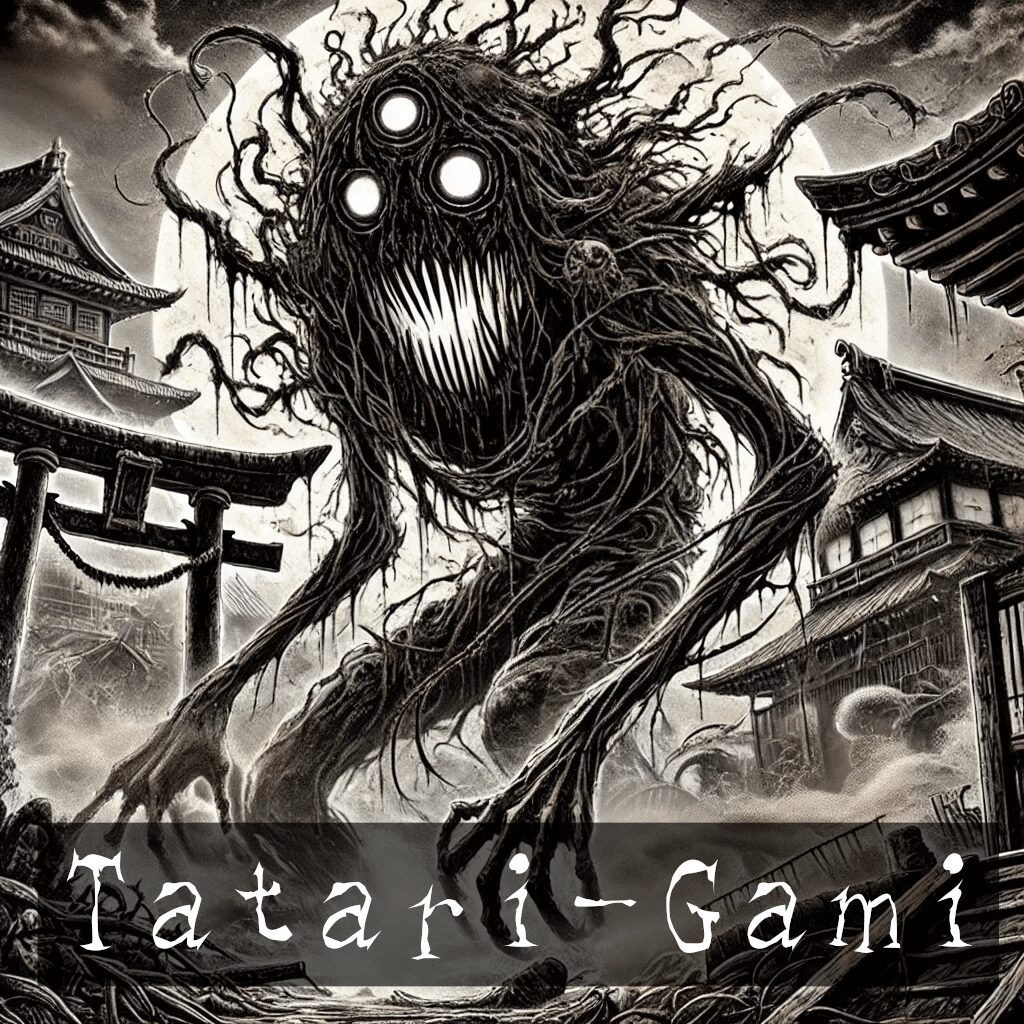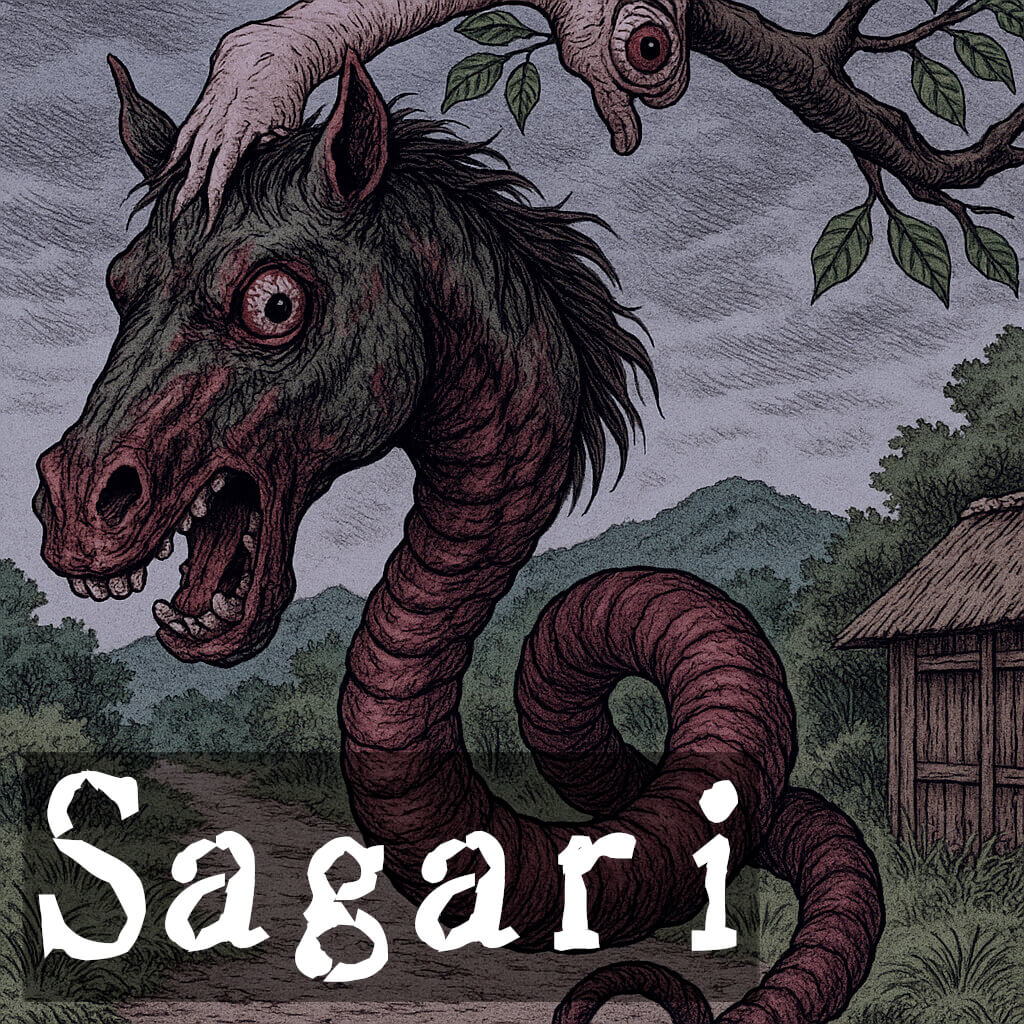Byakko… A white tiger, which has been worshiped as a guardian deity from ancient times…
Here, let us explore the historical background of this divine beast, how it has been received in Japan, and examine both aspects as a divine beast and as a yokai.
What are the origins of Byakko?
Byakko (白虎) is a divine beast that originated in Chinese legend and takes the form of a white tiger. It is one of the Shijin (四神 / Four God), alongside Seiryu (青龍 / Blue Dragon), Suzaku (朱雀 / Red Phoenix), and Genbu (玄武 / Black Turtle-Snake), rooted in Taoism and Feng Shui beliefs in China.
As one of the sacred beasts protecting the four directions, it is said to guard the west and embody the element of metal. In ancient Chinese belief, white is considered the colour of the west.
Byakko Story (video)
<–coming soon!–>
The Worship of Byakko in Japan
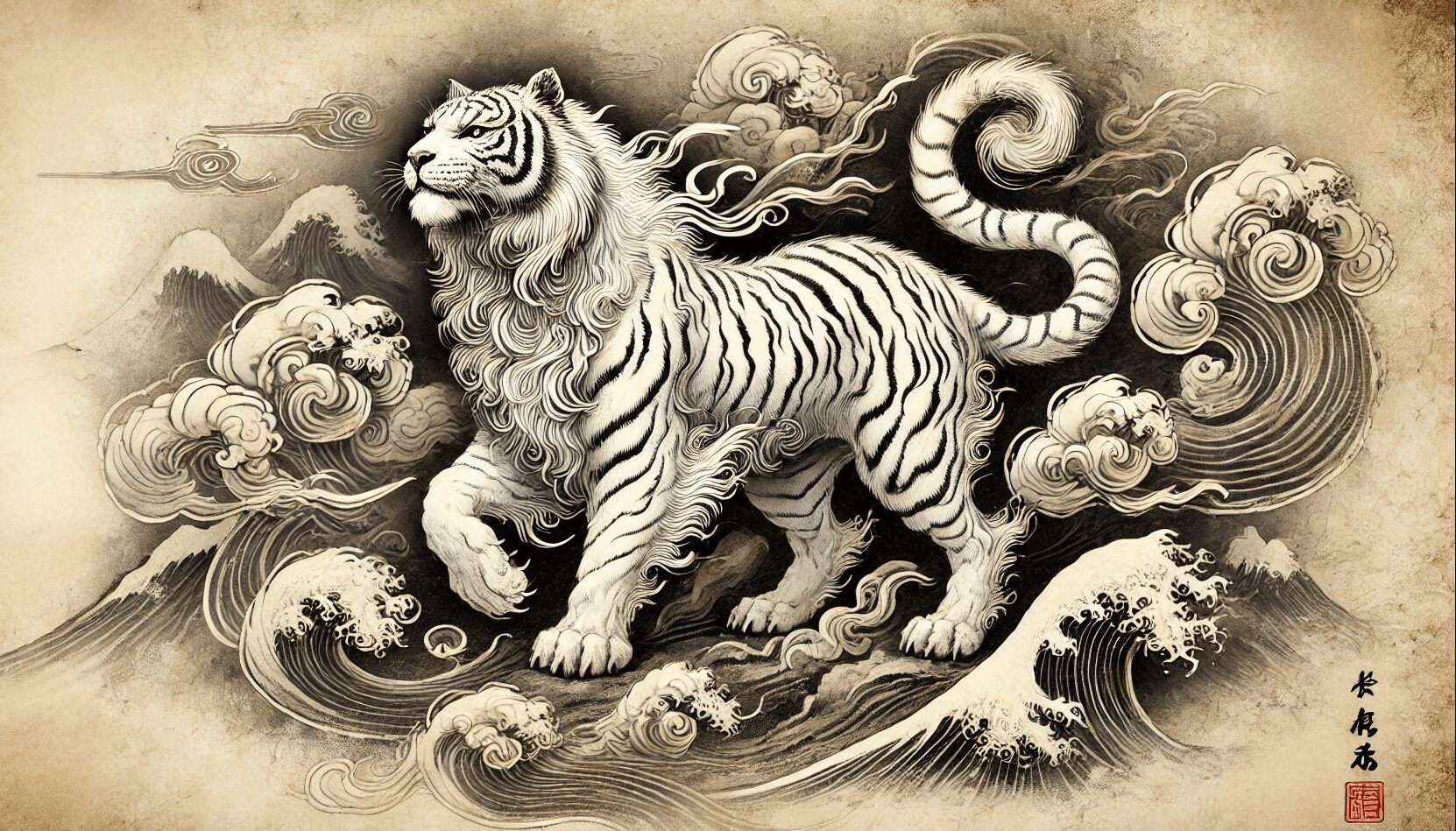
The belief in the Four Gods was introduced to Japan, and during the Heian period (8th to 12th centuries), it became associated with Onmyodo (陰陽道 / Japanese esoteric cosmology).
For example, in the spatial concept of Heian-kyo (平安京 / the capital in the Heian period), a shrine called Matsuo Taisha (松尾大社) was said to have been protected by Byakko in the west, demonstrating the incorporation of the Four Gods into the city’s structure.
Also, during the Meiji Restoration, it became even more well-known through the “Byakkotai” (白虎隊 / White Tiger Unit), reinforcing its status as a symbol of courage.
The Interpretation of Byakko as a Yokai

While Byakko is primarily regarded as a divine beast, it has also been depicted in Japanese yokai folklore in a different light.
For instance, a similar entity is mentioned in the Konjaku Monogatari Shu (今昔物語集), and in the Hyakki Yagyo Emaki (百鬼夜行), large dog-like or wolf-like yokai resembling a white tiger are illustrated.
Byakko in Japanese Literature and Pop Culture
Byakko has significantly influenced Japanese culture, appearing in shrine architecture and classical paintings. Additionally, it has been featured as a character in manga and anime, often portrayed as a being with mysterious powers.
Find Your Kaidan!
Discover your favourite Japanese scary/horror stories
Categories
Let’s talk
Would you like to analyse the story, make theories on it, and share your thoughts?
Please join our Discord channel
where you can share your thoughts and interact with other Kaidan lovers!
